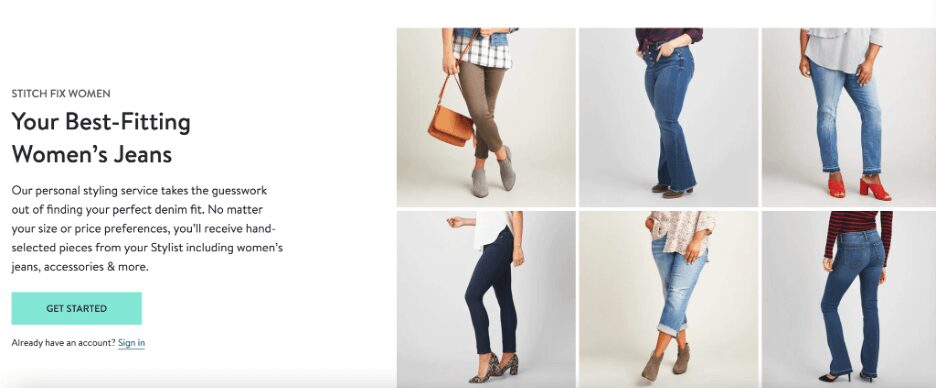
The artificial intelligence (AI) industry has grown immensely in recent years, and much of this growth has been catalyzed by the arrival of ChatGPT and the adoption of generative AI in general. The latter alone is expected to be a $1.3 trillion market by 2032. Many industries have found that these computer programs can now do much of the work for them in seconds and minutes instead of hours and days. As a result of this, professionals involved in the creation of content and user experiences (UX), such as writers, designers, coders, and game developers, are likely to be affected by this change the most.
Employers too are grappling with critical business decisions. Is generative AI mature enough to replace all creative staff and still retain customer engagement with its output? Or should you blend human and machine labor? If so, to what extent and which functions are likely to be affected the most?
In a nutshell, the answer is professionals, supported by the right AI technology, can significantly level up business outcomes. With AI, they can deliver newer, more personalized experiences, streamline web development, boost conversions, and more. Here’s how AI is shaping the future of UI and UX design for developers and creatives worldwide.
Table of Contents
Rise of AI Design Systems
An artificial design intelligence (ADI) system is a technology able to create anything from images to full-fledged user interfaces (UIs) by itself based on human inputs. Midjourney is among the most popular ADI tools out there for creating artwork. Wix leverages ADI to help users build out a website with minimal design intervention on their part.
As you might expect, there has been a surge of interest in this technology. For example, the search volume for ADI tools shot up by 1,000% from 2022 to 2023.

Google Trends search volume chart for ADI tools
There’s no question that ADI tools have made a number of jobs easier. AI is a boon to UX design professionals, helping them build out engaging platforms much more quickly. Typically, the web design process starts with a wireframe, followed by design and HTML. The web pages are then A/B tested to assess user behavior and interaction before being released to the wider public. AI can help streamline all of these tasks. The technology is built into the software that designers and developers use at various stages of the process. For example, many of Adobe’s suite of UX design tools, including Firefly, Express, Photoshop, and Illustrator use AI to improve creative workflows, generate images and text effects, and optimize finished artwork.
AI UX design software like Adobe can help intuitively create websites that provide more tailored and fluid experiences for your customers and drive up conversions and repeat purchases.
Applications for AI in UI and UX Design
The improved accessibility of AI has helped accelerate its application across design use cases. It’s offering stakeholders a way to deliver newer and more interesting experiences for customers.
- Personalized UX
One of the biggest prevailing advantages of AI and machine learning (ML) systems is that they can contextualize the on-site experience for visitors. By analyzing user data, including browser cookies, time and location, and behavioral data, you can develop a pretty good idea of what might appeal to the user in question.
Properly leveraged, this information can help you tailor much of your platform to deliver a more engaging experience. For example, you can use AI to support UX design and enhance your website’s appearance to impress your target audience. You can improve your site search function to provide more relevant results to visitors, as well as more accurately target prospects via digital marketing campaigns.
In a groundbreaking campaign, Cadbury recently democratized UX personalization for millions of small-scale retailers in India by allowing them to run AI-generated digital ads featuring a popular local actor.
- Tailored Recommendations
AI has revolutionized the way UX design managers serve up content on various platforms. A little-known factoid is that prior to the advent of AI and ML, Netflix used to rely on traditional consumer surveys to understand viewing preferences. This is in keeping with the erstwhile era, where platform developers would have no recourse to manual surveys, usability tests, focus groups, and one-on-one interviews.

This was not just time-consuming, but also greatly limited the value the enterprises could pull from the exercise and the speed with which they could react to market dynamics. Today, however, Netflix, YouTube, Spotify, and all other streaming platforms collect vast amounts of data on users’ viewing habits and on-site interactions. They use these to anticipate viewers’ preferences and serve up tailored content recommendations.
The same goes for ecommerce websites that analyze consumer behavior, such as user journey and past orders, to push recommended products that buyers might find useful. The combination of AI and UX design helps brands boost conversions, average order value, and repeat purchases throughout the customer’s lifetime.
- Interactive Experiences
AI has proved to be an excellent development when it comes to improving user communication and personal interactions. Specifically, it has provided businesses with a game-changing outreach option by facilitating human-to-machine interactions.
AI chatbots, once a novelty, are now ubiquitous across websites to help improve customer service. AI-based UX applications for chat and troubleshooting have changed the way businesses operate, with companies now able to offer 24/7 chat assistance for customers globally.
With advanced AI algorithms and natural language processing (NLP) systems in place, chatbots can learn from previous interactions to improve the answers they provide each time.
Companies like Mastercard and Allstate have already deployed ChatGPT-powered chatbots to improve customer experiences. Apple’s Siri and Amazon’s Alexa are using AI-powered text-to-speech and speech-to-text technologies to enhance accessibility in UX design.
- Unique UI
UI design focuses on the more visual aspects of design, including determining color schemes, site layout, fonts, and other visual elements. AI-led UI design complements UX by providing a relatable interface or website appearance for users to navigate.
According to Forrester, quality UI design can raise website conversion by up to 200%. It can help your prospects identify with your brand and forge a deeper connection, prompting higher engagement and sales. UI designers strive to create clear, on-brand designs that consistently communicate a brand’s values and purpose to its users. ADI programs can prove to be a great addition to this process.
Typically trained in basic design principles, ADI solutions are able to observe and analyze new website pages to level up UI and UX design. Present and future applications include creating new and unique interfaces that are a great reflection of your brand’s identity and a competitive advantage in the market.
A great example of this is Shopify’s new AI assistant Sidekick, which now allows retailers to transform the look and feel of their Shopify website to reflect a new product catalog or business objective, simply with a few prompts.
- Web Design Diagnostics
AI is useful for UX design, not just as a design assistance tool, but as a diagnostic tool as well.
Design and user experience are now a key factor for search engine algorithms in determining your website’s search ranking. In fact, 88% of online consumers are less likely to return to a website that offers poor user experience.
AI can help you analyze the existing performance of your web pages or predict future performance for new designs based on established models. Traditional diagnostic tools, such as those you’d use to run A/B tests, can be time-consuming and also create a drag on website speed and responsiveness.
With AI, you can test everything from your website’s messaging to its design and user journey in real-time, all the while eliminating the need for extensive testing procedures. It’s likely to be a mainstream option for UI and UX design diagnostics in the future.
- Skill Enhancement
AI has the capacity to have a transformative impact on professional skills and workplace applications. It’s already a key component of e-learning and skill development programs, enabling people to cultivate new proficiencies in various disciplines, such as coding and writing.
Similarly, AI UX design tools can help bridge the artistic skills gap and help employees get more done with less know-how. While this can challenge the role of professional designers to some extent, it also greatly improves the accessibility of UX design as a profession.
Duolingo, the language learning platform, recently partnered with ChatGPT to launch new features and exercises for professional users to help them improve their language skills. It’s a great tool for writers, for instance, to extend their skills and create multilingual content.
Future of AI-Led UI and UX Design
While AI is already prevalent in design and development processes, there’s a lot more it can do. The technology is evolving very rapidly, and it’s quite conceivable that its present applications could be perceived as quite basic a few years down the line. Here are a few trends to expect with AI and UX.
Hyperpersonalization

While websites are already able to personalize UX to some extent, this could take a quantum leap with the technologies now in play. Advanced AI algorithms can process huge amounts of data, in addition to generating targeted content. The advent of 5G makes it possible to do this at blinding speed. As a result, platforms can dynamically generate highly personalized content and layouts on the fly to offer highly personalized UI and UX design in the future.
Emotional Recognition
One of the most intriguing applications for AI in UX design is its ability to potentially register emotions. Combined with facial recognition and other biometric sensors, AI algorithms can analyze a person’s facial expressions, tone of voice, and other physiological data to assess how engaged or otherwise they are. The algorithm can leverage this data to customize and improve the experience for the user.
NLP Voice and Gesture Recognition
With NLP systems progressing as fast as they are, companies can design AI and UX applications that leverage voice and gesture recognition. Use cases include deploying highly realistic virtual assistants, video avatars, and facilitating utility for differently-abled persons who find it harder to use a keyboard.
Enhance Your User Experience With Coalition Technologies
Coalition Technologies is a multiple award-winning digital agency with a proven track record of building out next-gen and ecommerce web solutions. We’ve designed and optimized some 800 websites and generated over half a billion dollars for our clients worldwide. Schedule a consultation with us to see how we can boost customer experiences and satisfaction for your business. Follow our blog for more information on the future of AI-based UI and UX design.


